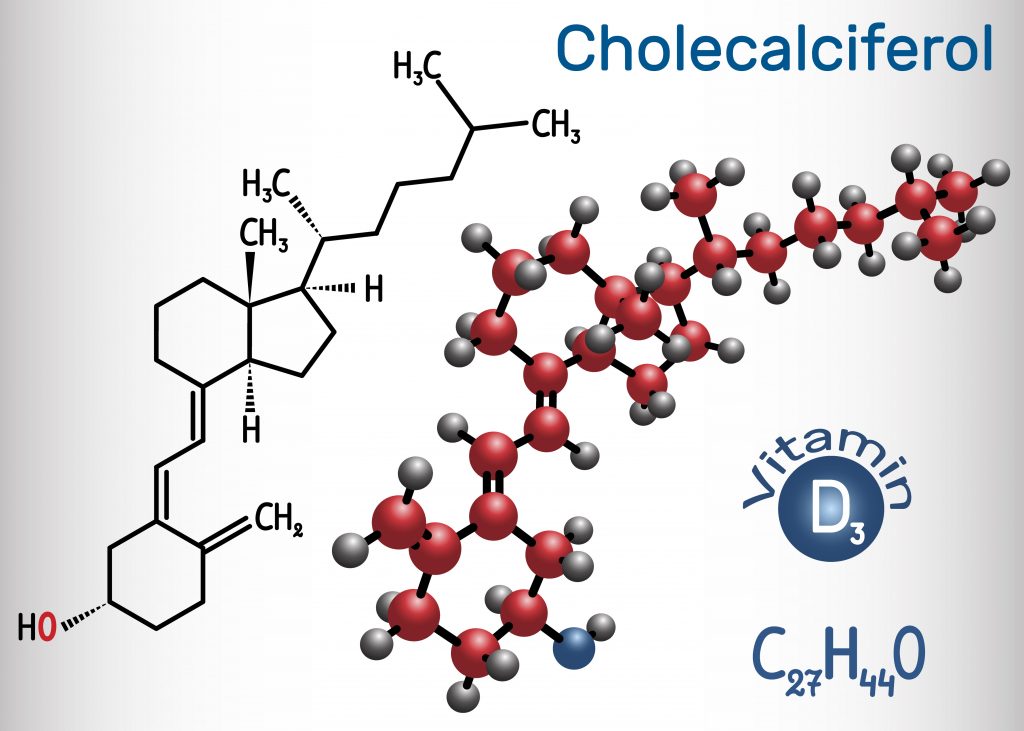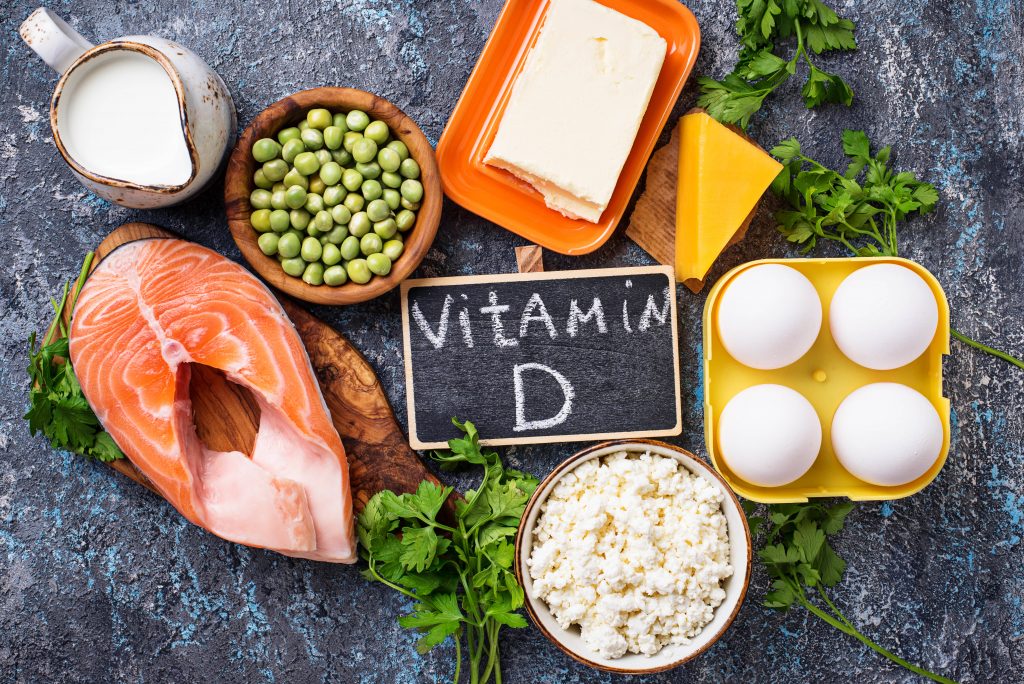Published on September 19, 2020. Last Updated on July 20, 2021.
Vitamin D is a fat soluble vitamin that we need for many areas of health like the normal development of bones and teeth and even the growth of hair. It also stimulates new cell growth, even in hair follicles. Deficiencies have been linked to various disorders including hair loss. So is it enough to just take supplements? Researchers are finding that a more elevated compound, a hydroxylated version of vitamin D3 known as hydroxycholecaliferol actually does a much better job at elevating blood serum levels of vitamin D, compared to vitamin D supplements and another enhancer known as cholecalciferol.

What Is Vitamin D?
Vitamin D is a fat soluble vitamin that helps us absorb calcium and phosphorous. It is available to us in the form of three main versions:
- ergocaliferol D2
- cholecaliferol D3
- alphacalcidol
Vitamin D is known to assist us in the normal development of bones and teeth. It also helps with immunity and our body’s resistance to certain types of diseases. When there are lower levels of vitamin D, this contributes to health impairments such as:
- osteoarthritis
- low bone density and softening
- cancer
- heart disease
- alopecia (hair loss)
Sources of Vitamin D
Vitamin D can be made in the body and also come from extrinsic sources:
- production in the skin with adequate amounts of sun exposure.
- food sources
- nutritional supplements

The Relationship Between Vitamin D And The Hair

When vitamin D levels drop significantly, this can lead to hair loss. Here are several studies which help illustrate this relationship.
In one publication, researchers were interested in learning more about how vitamin D affects the hair growth cycle and whether or not these capabilities can be used for clinical applications in treating hair disorders [1]. They conducted a MEDLINE search to compile scientific literature on vitamin D itself, hair follicle cell receptors for vitamin D and hair loss. Based on their reviews, they found that vitamin D’s role in the hair growth cycle is to help initiate the anagen growth phase. They also concluded that treatments to upregulate the body’s own production of vitamin D receptors on the hair follicles may successfully treat hair disorders.
Low vitamin D can lead to hair loss since it stimulates hair growth in both old and new hair follicles. And when levels are low, this may delay new hair growth.
Researchers assessed female hair loss alopecia patients 18-45 years of age and found what most of them had in common was low vitamin D levels in their blood [2].
Scientists have found that the vitamin D receptors, rather than the nutrient itself can produce new hair follicles and even restore growth. For example, researchers studied mice who were purposely bred without the vitamin D receptor on their hair follicles. Hair growth occurred when they were introduced in these animals [3].
Scientists looked at patients with chronic telogen effluvium and studied the genetic basis for this problem [4]. Telogen effluvium is a diffused hair loss condition caused by stressors. In this study they identified specific gene mutations in their subject group which affects the normal development of the vitamin D receptor. These changes prevent new hair growth in the anagen phase and stops the proliferation of hair follicle cells.
Prior to another study, serum ferritin vitamin D levels were not assessed in diffuse hair loss patients. With the findings of this particular research experiment, scientists concluded that this variable should be part of the screening and evaluation processes in order to determine treatment measures [5].
Besides telogen effluvium and diffuse hair loss, females can also suffer from female pattern hair loss (similar to male pattern hair loss). One study evaluated women with female pattern hair loss as well as those with telogen effluvium [6]. They concluded that screening for vitamin D should be included in the evaluation of these patients and given appropriate supplementation when needed.
Improving Vitamin D Levels in the Blood With Hydroxycholecaliferol

Severe vitamin D deficiencies are addressed using compounds like calcifediol and cholecalcifediol. Both are forms of the vitamin which are more usable by the body. However, there is yet another version of vitamin D which is far more effective. It is known as hydroxycholecalciferol.
One study compared the performance of cholecalciferol and hydroxcholecalciferol in order to improve the blood serum levels of vitamin D in older patients [7]. They actually found that 25-hydroxycholecaliferol is actually three times more effective than cholecalciferol in raising vitamin D in the blood.
Vitamin D is necessary for the proper development of many of our cells and assists in the overall proper functioning of our health. It is a bigger contributor to normal hair growth than previously thought, by science. Now, thanks to recent research studies it is a variable that is being considered with greater priority than before. As a result of these experiments, vitamin D is finally being introduced into the screening processes for determining the causes of hair loss conditions for specific patients. However, there are certain forms of vitamin D which are more suitable for absorption by the body than others, like hydroxycholecalciferol. This particular version of vitamin D is available through thoughtfully formulated natural supplemental products.
Vitamin D may or may not be applicable to all hair loss conditions. If in doubt, consult with your physician to see if supplementation is an appropriate course of action.
Frequently Asked Questions – Vitamin D
How much vitamin D should I be taking?
The recommended dosage of vitamin D for adults is 600 IU (International Units) which equates to 20mcg. For older individuals, the intake should be increased to 800 IU (20mcg). Proper levels of vitamin D help you maintain normal hair growth as well as healthy bones and calcium metabolism.
Can I improve hair loss caused by vitamin D deficiencies simply by taking more vitamin D instead of related compounds like cholecalciferol and hydroxycholecaliferol?
It is better to take forms that are optimally compatible with your body. At the moment, in regards to standard vitamin D, there is not enough scientific evidence on whether or not it is possible to achieve significant hair growth or how long it will take.
What foods are good sources of vitamin D?
Vitamin D can be found mainly from animal sources like fish, egg yolk, cheese and milk. If you are a vegan, vegetarian or someone who eats a plant-based diet, consider foods like mushrooms, milks like almond, soy and fortified cereals. Keep in mind that
References
[1] Amor, Karrie & Rashid, Rashid & Mirmirani, Paradi et. al, Does D matter? The role of Vitamin D in hair disorders and hair follicle cycling. Dermatol Online J, 2010 Feb 15;16(2):3.
[2] Banihashemi M, Nahidi Y, Meibodi NT, et. al Serum Vitamin D3 Level in Patients with Female Pattern Hair Loss. Int J Trichology. 2016;8(3):116-120. doi:10.4103/0974-7753.188965
[3] Lisse, Thomas S et al. “The vitamin D receptor is required for activation of cWnt and hedgehog signaling in keratinocytes.” Molecular endocrinology (Baltimore, Md.) vol. 28,10 (2014): 1698-706. doi:10.1210/me.2014-1043
[4] Seleit, Iman et al. “Vitamin D Receptor Gene Polymorphism In Chronic Telogen Effluvium; A Case-Control Study.” Clinical, cosmetic and investigational dermatology vol. 12 745-750. 8 Oct. 2019,
[5] Tamer, Funda et al. “Serum ferritin and vitamin D levels should be evaluated in patients with diffuse hair loss prior to treatment.” Postepy dermatologii i alergologii vol. 37,3 (2020): 407-411.
[6] Banihashemi, Mahnaz et al. “Serum Vitamin D3 Level in Patients with Female Pattern Hair Loss.” International journal of trichology vol. 8,3 (2016): 116-20.
[7] Laura A Graeff-Armas, Igor Bendik et. al., Supplemental 25-Hydroxycholecalciferol Is More Effective than Cholecalciferol in Raising Serum 25-Hydroxyvitamin D Concentrations in Older Adults, The Journal of Nutrition, Volume 150, Issue 1, January 2020, Pages 73–81
Further Reading
Learn more about the significance of vitamin B for your hair and body
